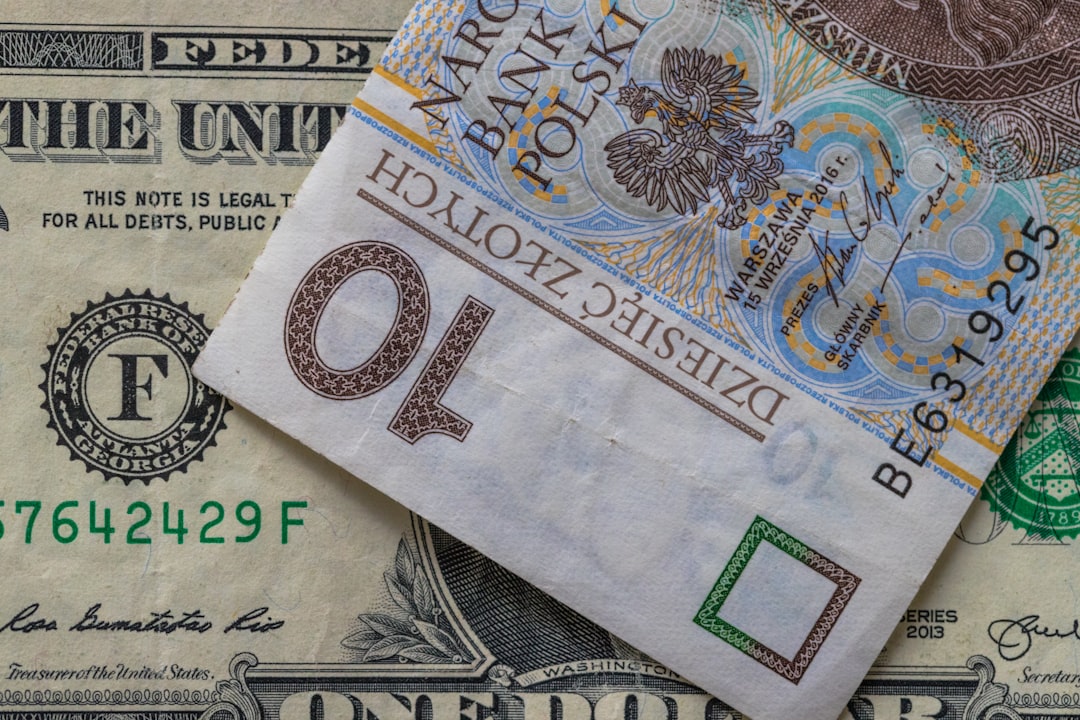Quantitative easing (QE) has emerged as a pivotal monetary policy tool, particularly in the wake of the global financial crisis of 2008. Central banks, such as the Federal Reserve in the United States and the European Central Bank, have employed this unconventional strategy to stimulate economic growth when traditional monetary policy measures, like lowering interest rates, have reached their limits. By purchasing government securities and other financial assets, central banks aim to inject liquidity into the economy, thereby encouraging lending and investment.
This approach marks a significant departure from conventional monetary policy, reflecting the urgent need for innovative solutions in times of economic distress. The concept of quantitative easing can be complex, yet its implications are far-reaching. As central banks expand their balance sheets through asset purchases, they effectively increase the money supply.
This influx of capital is intended to lower interest rates and promote borrowing among consumers and businesses. However, the long-term effects of QE remain a topic of intense debate among economists and policymakers. While some argue that it has successfully supported economic recovery, others caution against potential adverse consequences, such as asset bubbles and income inequality.
Understanding the intricacies of quantitative easing is essential for grasping its role in contemporary economic policy.
Key Takeaways
- Quantitative Easing (QE) is a monetary policy tool used by central banks to stimulate the economy by increasing the money supply.
- The goals of QE include lowering interest rates, boosting inflation, and promoting economic growth.
- QE involves central banks purchasing government securities and other financial assets to inject money into the economy.
- QE can lead to lower interest rates, making borrowing cheaper for businesses and consumers.
- QE can also impact inflation, exchange rates, asset prices, and overall economic growth, but it is a subject of debate and carries potential risks and drawbacks.
The Goals and Objectives of Quantitative Easing
The primary goal of quantitative easing is to stimulate economic activity during periods of stagnation or recession. By increasing the money supply, central banks aim to lower interest rates, making borrowing more attractive for consumers and businesses alike. This increased access to credit is expected to spur spending and investment, ultimately leading to job creation and economic growth.
In essence, QE serves as a bridge to restore confidence in the economy when traditional monetary policy tools are insufficient. Another objective of quantitative easing is to combat deflationary pressures. In an environment where prices are falling, consumers may delay purchases in anticipation of lower prices in the future, leading to a vicious cycle of reduced demand and further price declines.
By injecting liquidity into the economy, central banks hope to counteract these deflationary trends and encourage spending. Additionally, QE aims to stabilize financial markets by providing a safety net during periods of uncertainty, thereby fostering a more conducive environment for economic recovery.
The Mechanisms of Quantitative Easing

Quantitative easing operates through a series of well-defined mechanisms that facilitate the flow of money into the economy. Central banks initiate QE by purchasing government bonds and other financial assets from commercial banks and financial institutions. This process increases the reserves held by these banks, effectively boosting their capacity to lend.
As banks accumulate more reserves, they are incentivized to extend credit to businesses and consumers, thereby stimulating economic activity. Moreover, the purchase of assets by central banks has a ripple effect on financial markets. As central banks acquire bonds, their prices tend to rise while yields fall.
This decline in yields encourages investors to seek higher returns in riskier assets, such as stocks or corporate bonds. Consequently, QE not only increases liquidity but also influences asset allocation decisions across various sectors of the economy. By altering the risk-reward dynamics in financial markets, quantitative easing aims to foster a more favorable environment for investment and growth.
The Impact of Quantitative Easing on Interest Rates
| Year | Quantitative Easing Program | Interest Rates |
|---|---|---|
| 2008 | First QE program initiated | Interest rates decreased by 1% |
| 2010 | Second QE program implemented | Interest rates dropped by 0.75% |
| 2012 | Third QE program launched | Interest rates reduced by 0.5% |
| 2014 | Fourth QE program introduced | Interest rates declined by 0.25% |
One of the most significant impacts of quantitative easing is its effect on interest rates. By purchasing large quantities of government securities, central banks effectively lower yields on these assets, which translates into reduced borrowing costs for consumers and businesses. Lower interest rates make loans more affordable, encouraging individuals to finance major purchases such as homes and cars while prompting businesses to invest in expansion and innovation.
However, the relationship between QE and interest rates is not always straightforward. While central banks can influence short-term rates through asset purchases, long-term rates may respond differently based on market expectations regarding future economic conditions. If investors anticipate that QE will lead to higher inflation or fiscal imbalances in the future, they may demand higher yields on long-term bonds as compensation for increased risk.
Thus, while QE aims to lower interest rates, its effectiveness can be influenced by broader market dynamics and investor sentiment.
The Impact of Quantitative Easing on Inflation
Quantitative easing is often viewed as a tool for combating deflation and promoting inflation within target ranges set by central banks. By increasing the money supply and lowering interest rates, QE aims to stimulate demand for goods and services, which can lead to upward pressure on prices. In theory, this process should help central banks achieve their inflation targets and prevent prolonged periods of deflation that can stifle economic growth.
However, the actual impact of QE on inflation has been a subject of considerable debate. In some instances, despite significant asset purchases, inflation rates have remained stubbornly low. This phenomenon has led economists to question whether QE alone is sufficient to generate sustained inflationary pressures or if other factors—such as structural changes in the economy or shifts in consumer behavior—are at play.
As central banks navigate these complexities, they must carefully assess the effectiveness of QE in achieving their inflation objectives while remaining vigilant about potential unintended consequences.
The Impact of Quantitative Easing on Exchange Rates

Quantitative easing can also have profound effects on exchange rates, influencing international trade dynamics and capital flows. When a central bank engages in QE, it typically leads to a depreciation of the domestic currency relative to others. This depreciation occurs because increased money supply can reduce the currency’s value in foreign exchange markets.
However, the relationship between QE and exchange rates is influenced by various factors, including global economic conditions and monetary policies adopted by other countries. If multiple central banks implement QE simultaneously, the relative impact on exchange rates may be muted as currencies adjust in response to broader market trends.
Additionally, while a weaker currency can boost exports, it may also raise concerns about imported inflation and affect domestic purchasing power. Policymakers must carefully consider these trade-offs when evaluating the implications of QE on exchange rates.
The Impact of Quantitative Easing on Asset Prices
The influence of quantitative easing on asset prices is one of its most visible effects in financial markets. As central banks purchase large quantities of financial assets, they create upward pressure on prices across various asset classes, including stocks, bonds, and real estate. This phenomenon occurs because increased demand from central banks drives up prices while simultaneously lowering yields on fixed-income securities.
The rise in asset prices can have both positive and negative implications for the economy. On one hand, higher asset values can enhance household wealth, leading to increased consumer spending—a phenomenon known as the wealth effect. On the other hand, inflated asset prices may contribute to financial instability if they diverge significantly from underlying economic fundamentals.
The potential for asset bubbles raises concerns among economists and policymakers about the sustainability of such price increases and their long-term implications for economic stability.
The Impact of Quantitative Easing on the Economy
The overall impact of quantitative easing on the economy is multifaceted and complex. In theory, by lowering interest rates and increasing liquidity, QE should stimulate economic growth by encouraging borrowing and investment. This process can lead to job creation and improved consumer confidence as businesses expand operations in response to increased demand.
However, the effectiveness of QE in achieving these outcomes can vary based on several factors, including the prevailing economic environment and structural challenges within the economy. For instance, if businesses remain hesitant to invest due to uncertainty about future demand or regulatory changes, the intended effects of QE may be muted. Additionally, while QE can provide short-term relief during economic downturns, its long-term efficacy remains uncertain as economies grapple with issues such as income inequality and productivity stagnation.
The Debate Surrounding Quantitative Easing
The implementation of quantitative easing has sparked significant debate among economists, policymakers, and financial analysts regarding its efficacy and potential consequences. Proponents argue that QE has played a crucial role in stabilizing economies during crises by providing much-needed liquidity and supporting recovery efforts. They contend that without such measures, economies would have faced deeper recessions with prolonged periods of high unemployment.
Conversely, critics raise concerns about the long-term implications of QE on financial markets and economic stability. They argue that prolonged periods of low interest rates can lead to excessive risk-taking among investors and contribute to asset bubbles that could ultimately destabilize financial systems. Additionally, there are worries about income inequality exacerbated by QE policies that disproportionately benefit wealthier individuals who hold financial assets while leaving lower-income households behind.
The Potential Risks and Drawbacks of Quantitative Easing
While quantitative easing has been heralded as a necessary response to economic crises, it is not without its risks and drawbacks. One significant concern is that prolonged QE can lead to distortions in financial markets as investors search for yield in increasingly risky assets. This behavior can create bubbles that may burst when market conditions change or when central banks begin unwinding their balance sheets.
Another potential drawback is the impact on income inequality. As asset prices rise due to QE measures, those who own financial assets—typically wealthier individuals—benefit disproportionately compared to those who do not have significant investments in stocks or real estate. This widening wealth gap can have social implications and may undermine public support for such policies over time.
The Future of Quantitative Easing
As economies continue to navigate complex challenges in an ever-changing global landscape, the future of quantitative easing remains uncertain.
Policymakers face the daunting task of balancing short-term recovery efforts with long-term economic stability.
In conclusion, while quantitative easing has proven effective in addressing immediate economic crises, its long-term implications warrant careful consideration. As central banks explore new strategies for fostering sustainable growth—such as incorporating fiscal policy measures or addressing structural issues within economies—the lessons learned from past experiences with QE will undoubtedly shape future monetary policy decisions. The ongoing debate surrounding this unconventional tool underscores the need for vigilance as economies strive for resilience in an increasingly interconnected world.
Quantitative easing (QE) has been a significant monetary policy tool used by central banks to stimulate the economy, especially during periods of low inflation and economic stagnation. By purchasing government securities and other financial assets, central banks increase the money supply, aiming to lower interest rates and encourage lending and investment. The effects of QE can be complex, influencing everything from asset prices to income inequality. For a deeper understanding of how QE impacts the economy, you can explore a related article on this topic by visiting this page. This article delves into the nuances of QE and its broader economic implications, providing valuable insights for those interested in monetary policy and economic growth.
WATCH THIS! The AI Paradox: Who Buys the Stuff When Nobody Has a Job?
FAQs
What is quantitative easing (QE)?
Quantitative easing is a monetary policy used by central banks to stimulate the economy by buying financial assets from commercial banks and other private institutions. This increases the money supply and lowers interest rates, which is intended to encourage lending and investment.
What are the effects of quantitative easing?
The effects of quantitative easing can include lower interest rates, increased money supply, higher asset prices, and a weaker currency. It can also lead to inflation and increased risk-taking by investors.
How does quantitative easing affect the economy?
Quantitative easing can stimulate economic growth by lowering borrowing costs for businesses and consumers, which can lead to increased spending and investment. However, it can also lead to inflation and asset price bubbles.
What are the potential risks of quantitative easing?
Some potential risks of quantitative easing include inflation, asset price bubbles, and increased inequality. It can also lead to a weaker currency and encourage excessive risk-taking by investors.
How long do the effects of quantitative easing last?
The effects of quantitative easing can vary depending on the specific economic conditions and the scale of the program. In some cases, the effects may be temporary, while in others they can have longer-lasting impacts on the economy.
